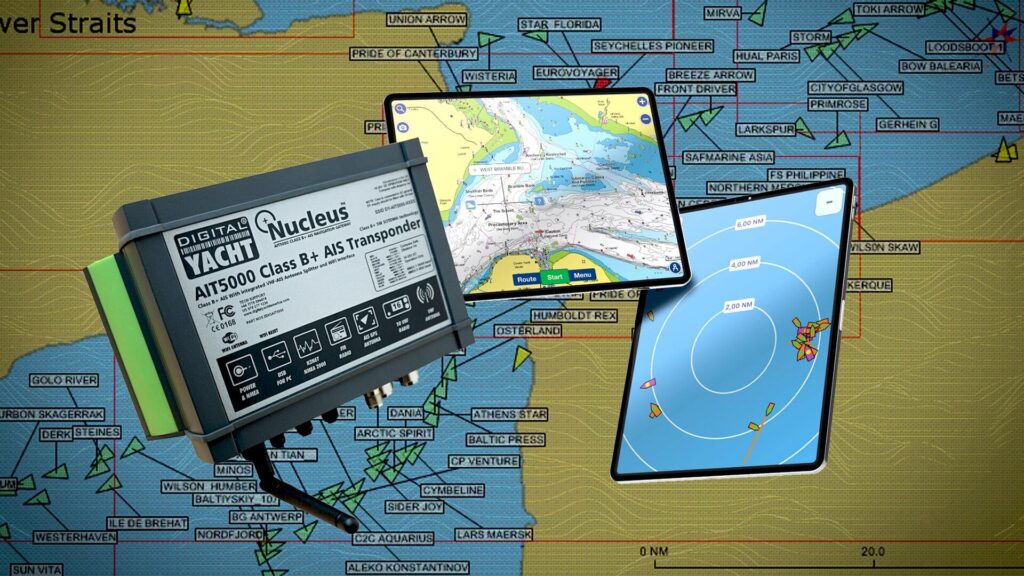Automatic Identification Systems (AIS) are a game changer when it comes to marine safety and navigation. For anyone venturing out on the water, whether for leisure or commercial purposes, embracing this technology ensures you can see and be seen, thus avoiding potential collisions and enhancing situational awareness on busy waterways.
What is AIS?
An AIS is a marine safety tool that constantly broadcasts essential information about a vessel. This includes its position, speed, and identification to other nearby boats. In turn, it receives similar data from surrounding vessels, facilitating communication and safety. This information becomes critical in challenging visibility conditions or congested environments.
Key Benefits of Implementing AIS Onboard
- Visibility at Sea: AIS makes it possible for other vessels to pinpoint your location, speed, and heading.
- Collision Avoidance: The ability to track nearby AIS-equipped vessels in real time helps in avoiding mishaps.
- Vessel Identification: Instantly identify the names, MMSI numbers, and types of nearby vessels.
Types of AIS Transponders
There are three primary types of AIS transponders to consider, and the choice largely depends on the size and purpose of your vessel.
- Class B AIS Transponder: This model, tailored for recreational boats, operates on a lower power output (2W) and can transmit positioning data every 30 seconds, regardless of the vessel’s speed.
- Class B+ AIS Transponder: Known as Class B SOTDMA, it features a higher power output (5W) and allows for guaranteed time slots in high-traffic waters, making it ideal for faster-moving motor boats.
- Class A AIS Transponder: Typically required for commercial vessels, this transponder boasts a powerful 12.5W output and can transmit data as frequently as every 2 seconds, depending on the speed of the boat.
Setting Up Your AIS System
In addition to transponders, a reliable VHF antenna is necessary for transmitting and receiving AIS signals. Options include:
Dedicated VHF Antenna vs. VHF Splitter
- Dedicated VHF Antenna: A VHF antenna that operates exclusively on AIS frequencies offers the benefit of dual functionality as an emergency VHF radio antenna.
- VHF Splitter: While a splitter can extend the range and is suitable for sharing an existing VHF antenna between radio and AIS transponder, it tends to be more expensive than a dedicated model. Popular models include SPL1500 and SPL2000.
Choosing the Right GPS Antenna
Most AIS transponders utilize a passive GPS antenna. For optimal performance and accurate positioning data, an external GPS antenna is recommended. Inadequate GPS signals can hinder the effectiveness of the AIS system, making this a critical component of the setup.
Displaying AIS Targets
AIS targets can be viewed on NMEA 0183 or NMEA 2000 chartplotters, as well as tablets or PCs. AIS transponders from reputable brands are designed for seamless integration with leading chartplotter models, ensuring reliable performance across various devices. This compatibility is essential for both existing and new marine systems.
Numerous navigation apps and software can enhance your AIS experience, computing collision alarms based on AIS data. For navigation apps to process AIS targets, opt for a transponder equipped with Wi-Fi capability.
Choosing the Right AIS Transponder
To help navigate your decision, the table below summarizes current AIS models and their respective features:
| Features | iAISTX & iAISTX Plus | AIT2500 | AIT5000 | Nomad2 | AIB1000 | CLA2000 |
|---|---|---|---|---|---|---|
| Type of AIS & Transmit Power | 5W Class B+ | 5W Class B+ | 5W Class B+ | 5W Class B+ | 2W Class B | 12.5W Class A |
| Transmit Rate | Up to every 5 secs | Up to every 5 secs | Up to every 5 secs | Up to every 5 secs | Every 30 secs | Up to every 2 secs |
| Guaranteed Time Slot Allocation | Yes | Yes | Yes | Yes | No | Yes |
| Voyage Data | No | No | No | No | No | Yes |
| Power Supply | 12/24V | 12/24V | 12/24V | Cigarette Lighter Plug | Internal Battery or 12/24V | 12/24V |
| External or Built-in GPS | External GPS | External GPS | External GPS | External GPS | Built-in GPS | External GPS |
| Built-in VHF Splitter | No | No | Yes | No | No | No |
| NMEA 2000 | Yes for Plus Version | Yes | Yes | No | No | Yes |
| NMEA 0183 | No | Yes | Yes | No | No | Yes |
| Wi-Fi | Yes | No | Yes | Yes | No | Yes |
With advancements in AIS technology, it’s easier than ever to ensure safer boating experiences. From preventing collisions to enhancing communication between vessels, these systems play an indispensable role in the modern maritime world.
Embracing the technology around AIS equips boaters with essential tools for a journey at sea. Each sailing adventure is unique, allowing for exploration of diverse locations. However, it is important to recognize that each destination offers more than just stunning views; understanding local culture, nature, and the rhythm of life is an enriching experience. When planning your next seaside expedition, consider the immense value of renting a boat or yacht, as every inlet, bay, and lagoon conveys a story as enriching as the local cuisine, architecture, and language. For the ideal rental options, GetBoat.com is the place to visit.
This AIS technology information sheds light on its crucial benefits to maritime safety and navigation. The increasing use of AIS systems can significantly transform how voyages are experienced and enjoyed. With platforms like GetBoat, you can plan your next adventure with ease, ensuring that you have the right equipment at hand for responsible and enjoyable sailing. Join the community of boat enthusiasts and set sail on journeys filled with unforgettable memories.

 Understanding the Importance of AIS Systems for Boating Safety">
Understanding the Importance of AIS Systems for Boating Safety">
